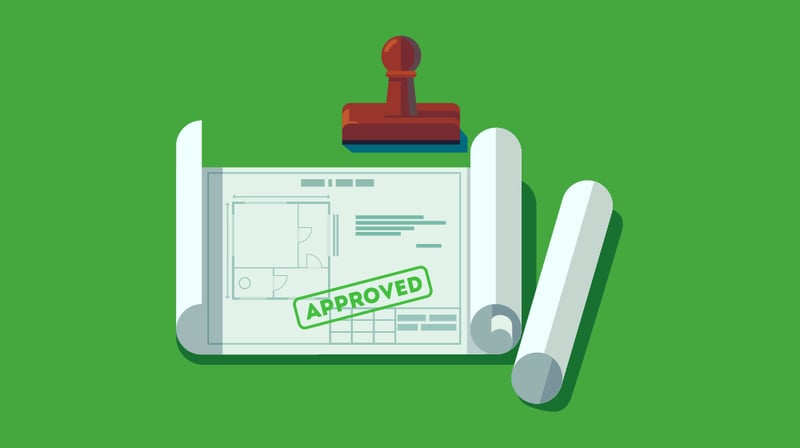I wish that, upon thinking of a campus program or event, I could click my heels and ta-dah!: It would magically be planned and run without a hitch.
Has anyone developed such technology? No? Darn.
Instead, we have to plan events the old fashioned way: By tackling things one at a time.
Doing so can be overwhelming. Where do you start?! What can’t be overlooked?
Well, I have 13 things in mind, tested and approved by many coworkers and students. Though they don’t make up an unabridged checklist, each is a vital event planning principle that you owe it to yourself (and your students) to consider — whether your event lasts five minutes or five days.
Good luck… and let’s get planning!
(And if you are looking for a complete step-by-step planner, we’ve made that, too! It’s ready for you to customize here.)
13 Golden Rules
1. Set priorities.
It can be all-to-tempting to launch into planning the flashiest details of your program. (“Let’s order dessert pizza! What if we wore matching pajamas or held a karaoke competition?”) But you should back up a bit first, and ask yourself and your student leaders to prioritize.
What is it that you most want your attendees to learn, experience, or take away your event? Why, primarily, are you choosing to invest in this program?
Knowing these answers will help you make consistent, smart decisions for budgeting and structuring the event. You’ll be able to spend your time and energy where they’re needed most.

2. Follow a proven process.
I’ll never advocate for doing something simply because “that’s how we’ve always done it.” But an event planning process that has historically worked well can be a fantastic guide — even if you don’t follow it to the letter.
If you’re put in charge of a recurring program, ask if the previous planner left notes detailing their process. Or, if the event is brand new, consult with coworkers about how they’ve planned other programs, then adopt a similar process.
An event-planning checklist or guidebook will be most useful if it were developed at your current institution with your students in mind. Resources from say, your former grad school classmate or someone you’ve “met” through Facebook, can still be helpful but won’t take the rules, power structures, and social norms of your institution into account.
And remember to save all your planning docs so you’ll have ‘em for next year… or be able to pass them on to your successor!
3. Create a planning timeline — with assignments.
Once you have the steps of your plan mapped it, be sure to add in a timeline.
Consider when you can (and more importantly, must) start and complete each item on your to-do-list. If you don’t, it’ll be all too easy to procrastinate — until it’s too late to orchestrate your vision. Be sure to note any deadlines set by your institution, as well as your vendors and community partners.
A timeline can also help you and your students avoid being intimidated by the mound of tasks ahead. By taking things one (or two or three) steps at a time, you’ll be more likely to tackle each thing with patience and calm.
If you have a partner or committee in event planning crime, be sure to specify who’ll complete each task — ideally narrowed down to a single person. You wouldn’t want to find yourself in a situation wherein everyone says “but I thought someone else would take care of it!”
4. Consider the risks.
Safety first!
Yes, I know that I’ve listed this as number five, but it does need to be a top priority. If your institution has a risk management office or consultant, be sure to have a conversation with them about your plans.
You may be required to fill out a risk management form in order for your event to be approved in the first place. But I recommend having a conversation with your student leaders or coworkers about safety before you submit anything. That way, your first attempt will likely be approved, and your students will get a lesson in safety considerations.
You may also need to contact campus police — either to consult on your plans, schedule an officer to be present at your event, or both. Don’t wait too long to do this!
5. Leverage event/communication software.
Even if you’re reinventing an event, you don’t need to reinvent your planning tools.
There are lots of digital tools out there on the web, just waiting to be discovered. I won’t list them now; but only because I don’t want to reinvent my own work. I already listed 62 great tools here!

The first 15 tools are ideal for event planning, and the others can indirectly help by simplifying communication, facilitating knowledge sharing and brainstorming, and much more.
Yes, learning how to use these tools will take up time. But ultimately, they should save you time… and stress.
6. Remember the tiniest details.
The devil is in the details, as are your student learning opportunities.
Consider every aspect of your event, from the time the first student enters until the last one leaves. What, for example, will the sign-in process look like? Where will it occur within your venue and what will students experience while they’re waiting in line?
Imaging every moment of the event — including all five senses that participants will experience — will help you keep students engaged and intrigued throughout it. It’ll also help you feel composed and confident heading into the event, and reassure your students that you’ve got things handled.
And when your student leaders and coworkers have questions, you’ll have answers… because you’ve thought of everything!
7. Remember supplies, tools, and tech.
Event planning involves a lot of… things… and stuff.

I’m talking about physical supplies. There’s probably food to serve, prizes to give away, and papers to pass out.
And remember the more mundane things, too! Keep in mind: Once the event gets going, you likely won’t be able to hop into a supply closet to grab forgotten items.
Here’s a sample supply checklist:
- For the food: serving utensils, cutlery, cups, pitchers, napkins, trays, table cloths, pitchers, napkins, allergen labels, salt and pepper, and to-go containers
- For clean-up: paper towels, gloves, Lysol wipes, brooms, and trash bags
- Office supplies: pens, pencils, paper, post-it notes, highlighters, tape, rubber bands, staplers, and scissors
- Items to request from facilities management: Chairs (and how you want them arranged), podiums, posters, banners, tables, step stools, easels, and flipcharts
- Items to request from AV event support: microphones, audio speakers, conference phones, laptops, presentation clickers, all sorts of cords, presentation screens, video cameras, laser points, and LED monitors (specify what type and how many you’ll need of each)
Think through each moment of the event, then imagine what you, your student leaders, and the event participants will want and need. I recommend going over all this with at least one other person, who might be able to point out items that you’ve missed.
And don’t forget to concoct a plan for how you’ll collect and transport all of these items over to your venue! Ditto returning, storing, or disposing of them afterward.
8. Understand the venue inside and out.
Securing the venue is one thing; knowing it well is another.
Take the time to tour and assess the space multiple times throughout the planning phase. This will allow you to make decisions about how you’ll set up your event, organize the flow, and decorate the room. Features of the space might also alert you to any issues that’ll challenge your ideal vision or, on the other hand, inspire fresh ideas.
Let’s face it: Setting up and running an event will always be a bit stressful. But understanding the space well will lessen the unknowns, allowing you to make decisions with ease and confidence.
9. Consider accessibility
How valuable can your event be if students can’t access it? Not much, in my opinion.
And by “access” I mean two things.
First, the simplest definition: That students can literally make it to the event. Be sure to pick a space that students with mobility challenges can enter. It’s best to avoid spaces that require tackling steep hills or narrow staircases. Ditto off-campus area that aren’t accessible by public transportation (or at least free transportation that you provide.)
Secondly, making an event accessible should mean that all participants can fully engage in and enjoy every aspect. This goes beyond just getting students through the door.
Physically, how can students with disabilities engage with your event? Make plans, for example, for where in the room wheelchair users will be able to watch a performance or how hearing-impaired students will be able to understand what’s being said.
Beyond that, consider how your activities might alienate students who don’t meet your unconscious assumptions — about participants’ needs, personalities, and backgrounds. Consider, for example, how your event will engage students with larger bodies (see our tips on that here), those who are parents (our thoughts here), and religious minority students (that’s here.)

You should consult with your accessibility services office, multicultural offices, LGBTQIA center, international students’ center, and other campus colleagues to make sure all your bases are covered.
You don’t need to be a certified accessible expert to ace your event’s accessibility. Ask for help.
10. Promote, promote, promote.
You can put endless hours into planning an event but if students don’t know about it, then you might as well have spent time twiddling your thumbs instead.
Marketing shouldn’t just be tossed in as any ole item on your checklist either. It’s much more important than buying ketchup packets or picking balloon colors. Marketing should be integral to your plans, taken into account soon after the event idea is first formed.
But I’ll bring this tip to an end now, and direct you to the post I’ve written all about the topic, complete with 26 unique marketing ideas. I hope they’ll inspire you.
11. Allocate responsibilities (before, during, and after).
Don’t merely ask coworkers and students to staff an event. Assign them to a specific component.
Ideally, narrow it down to a task or two. So, for example, don’t merely put three students in charge of a snack bar; ask one student to give out chips, one to pour drinks, and another to manage the line.
Or, if you’d rather not make those calls, at least advise these students of which tasks will need to be accomplished so they can gameplan on their own.
And don’t just focus on the official starting and ending hours! I recommend assigning roles to all of your helpers for set-up and clean-up, too. That way, you won’t have an abundance of bored students and coworkers staring you down, wondering what they should be doing and waiting for directions; all hands will be on deck the full time.
Finally, be sure to give students precise call times, with secure commitments to stay their entire shifts. Don’t rely on assumptions; even your most passionate student leaders might have non-negotiable responsibilities preventing them from contributing.
12. Expect the unexpected.

In the history of student affairs, has anyone ever run an event that went off exactly as planned? I doubt it. (But tell me otherwise, and I’ll FedEx that person a medal.)
So, plan for the unexpected. Here are some ways to do so:
- Have a backup location secured — in case of bad weather, electric outages, temporary safety concerns, and more.
- Assign more event helpers than you think you’ll need — in case someone gets sick or has to cancel last-minute… or if it simply turns out that you wrong about how many helpers were necessary.
- Re-confirm everything 24-hours in advance. Yes, even if you already placed confirmation calls a few weeks earlier. There’s no such thing as too many confirmations.
- Bring pain medicine with you. You won’t want a headache or neck cramp to bring you down.
- Be ready to switch up the event schedule — in case a component runs long or needs to be canceled.
- Have all of your event helpers’, co-sponsors’, and presenters’ phone numbers programmed into your phone — so you can reach them at the last minute. Ditto facilities management, accessibility services, and any other office you consulted with during the planning phase.
- Know where the nearest convenience store is, and confirm that it’ll be open during the whole event, so you can buy last-minute necessities. Ideally, have a helper assigned (with their car parked nearby) to make this happen.
- Have back-up options in case of technology failures. (Consider what you’ll do if you can’t access the internet, a microphone breaks, or your guest speaker forgets their laptop.)
- Be ready to shift the presentation or activity if a different group of students shows up from whom you anticipated. Perhaps you imagined a predominantly upperclassman audience but ended up with manly first-year students. Or, maybe you hoped to attract many politically-engaged students but mid-way through, realize that most attendees are ill-formed of local politics.
Sadly, you can’t plan for every possible disaster moments, but you can at least be prepared for some.
13. Assess after.
Congratulations on finishing your event! That “wahoo” you hear is me cheering you on from Florida.
But the work shouldn’t stop there. You need to assess the event — not only to foster your own learning but also to promote your student leaders’ growth.
I recommend setting a date and time for your assessment while the program is still a few weeks in the future. Otherwise, you may forget about it, having moved on to the next initiative.
Here are some things to consider in your assessment:
- Assess the planning process. Were you happy with the decisions you made and how you communicated with your committee, coworkers, and student leaders? What other planning techniques or tools would you like to try out next time?
- Assess setup, running the event, and cleanup. Did everyone understand their roles and perform them well? How might have things gone more smoothly?
- Assess the participants’ experience. Beyond enjoying it, what learning outcomes did they gain or progress toward? Were they engaged the whole time?
- Assess the event’s goals. In addition to your learning outcomes, your measurable goals might include signing students up for an upcoming event, increasing students’ knowledge of a campus resource, or helping commuter students connect with one another.
Don’t just rely on students’ complaints or praise, nor your gut, to say “that went well” or “that was terrible.”
Assessing your event will allow you to prove its worth. It can reveal which students you’re failing to engage, show you how well your goals align with results, and ultimately, help you decide whether or not similar events are worth investing in.

What did we miss? How do you go about planning events? We’ll love to hear from you @themoderncampus!





